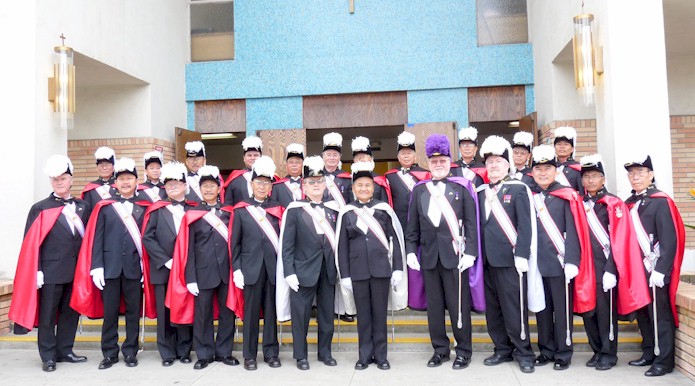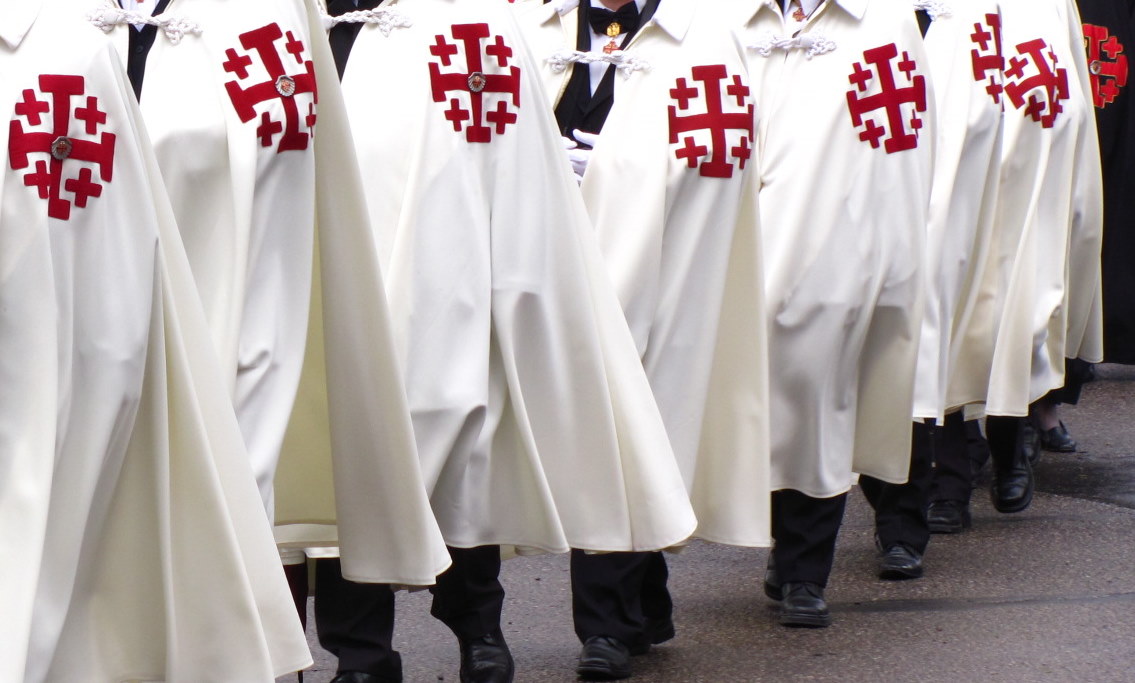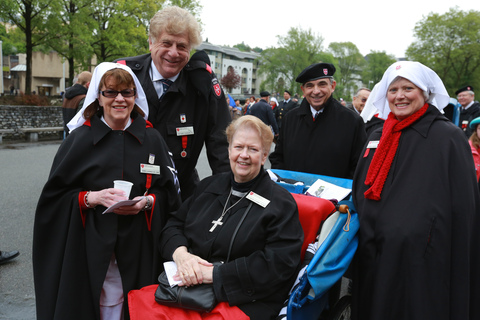Those New Uniforms for the Knights of Columbus
The Knights of Columbus announce new uniforms for the Fourth Degree

For anyone who attends most important diocesan events, the Knights of Columbus in full and colorful regalia are a common sight. Aside from doing genuinely remarkable work in charitable endeavors, the Knights are a prominent and visible fixture at Masses and parades, giving a vibrant sense of pageantry and public witness to the faith.
For those who may not be all that familiar with the Knights and their many labors, the Knights of Columbus is a fraternal benefit society of Catholic men founded by Venerable Fr. Michael J. McGivney and chartered by the General Assembly of Connecticut on March 29, 1882. It was named in honor of Christopher Columbus, began as a mutual benefit society to working class and immigrant Catholics in the United States and developed into a fraternal benefit society dedicated to providing charitable services, promoting Catholic education and Catholic public policy positions and actively defending Catholicism in the public square. There are now nearly two million members, and from the first local council in New Haven, the Order has grown to some 15,000 councils in the United States, Canada, Mexico, the Philippines, Puerto Rico, Cuba, the Dominican Republic, Panama, the Virgin Islands, Guatemala, Guam, Saipan and Poland.
In keeping with their general purpose to be of service to the Church, the Knights and their families are active in many apostolic works and community programs, cooperate with the U.S. bishops in pro-life activities and are engaged in other apostolic endeavors. Most recently, the KofC has been one of the single most important lifelines for Christians suffering persecution and genocide in the Middle East.
Membership in the Knights consists of four different degrees, each intended to epitomize different principles espoused by the Order: Charity, Unity, Fraternity and Patriotism. Full membership is considered at the Third Degree.
Movement to the Fourth Degree is optional for members, and it places its primary focus on patriotism and good citizenship, hence it traditional nickname as the Patriotic Degree. To join the Fourth Degree, a member must be over 18 years of age, be a citizen of the country where they reside, have been a Knight for at least 6 months and be in good standing with their local council. Approximately 20% of the world’s members choose to become Fourth Degree Knights.
And that is where the uniform enters the story.
One of the options for Fourth Degree Knights is to take part in the very memorable full regalia, called the Color Corps, beyond the official dress of the Fourth Degree which typically consists of the black bow tie, plain white tuxedo shirt, black cummerbund, black footwear, black tuxedo and the social baldric (a sash in red, white and blue for America, with other colors used for other countries) worn under the coat, from right shoulder to left hip.
The most widely associated image with the Knights, the Color Corps’ uniform includes the cape, a colorful feathered chapeau (never called a hat), gloves, service baldric and the famous sword. Not every Fourth Degree is required to join the Color Corps. There are many rules associated with the regalia for the Color Corps, with the color of the cape and chapeau varying according to the office held by the Knight.
The overall uniform of the Fourth Degree was adopted in 1900 but has undergone various changes over the years.

And now it faces the most sweeping change yet.
During his address at the 135th annual Supreme Convention of the Knights in St. Louis, Missouri, Supreme Knight Carl Anderson announced a complete revision of the uniform of the Fourth Degree Knights. “The Board of Directors, Anderson told the gathered Knights, “has decided that the time is right for a modernization of the Fourth Degree Uniform.”
The new uniform consists of a blue blazer, an official Knights of Columbus tie and a beret, all with the Fourth Degree emblem clearly displayed. The uniform also includes a white shirt and dark gray slacks.
To be sure, this is a departure from the last decades, and the question was raised immediately as to whether the Color Corps and Honor Guards would be affected as well. The answer is a definite yes.
“On a limited basis,” Anderson added, “Assemblies may choose to continue using the traditional cape and chapeau for Color Corps at public events and Honor Guards in liturgical processions. However the preferred dress for the Fourth Degree, including Color Corps and Honor Guards, is the new uniform of jacket and beret.”
To be sure, too, this is a new look for the Fourth Degree Knights, and from a sartorial perspective, the uniform is more modern. The beret with the emblem is familiar to anyone with a military background just as the chapeau of the previous uniform was recognizable to fans of older naval uniforms.
As for the ceremonial sword, Andrew Walther, Vice President of Communications and Strategic Planning for the Knights of Columbus, stresses that “this uniform is not intended to eliminate the use of the ceremonial sword. In fact ceremonial swords will continue to be part of the Fourth Degree.” More details, he added, will be forthcoming from the Supreme Master.
This will likely be a controversial move with some of the members. In an article discussing the reform, Tony Gutiérrez of The Catholic Sun interviewed several members with mixed reactions. Meanwhile, on twitter, a small campaign – #KeepOurRegalia – has already started to keep the old uniform.
But how does the new uniform compare to the other groups typically seen at major liturgical events in the life of the Church in the United States. Two, of course, leap to mind: The Equestrian Order of the Holy Sepulchre of Jerusalem (commonly called the Knights of the Holy Sepulchre) and the Sovereign Military Hospitaller Order of Saint John of Jerusalem of Rhodes and of Malta (commonly called the Order of Malta).
It is important to qualify any discussion, of course, that the members of the Holy Sepulchre and of Malta belong to ancient orders of knighthood, while the Knights of Columbus belong to a great but nevertheless fraternal Catholic organization. The traditions of the two orders are thus much older, and the vesture reflects that noble antiquity.
The Knights of the Holy Sepulchre wear a uniform of a cape of white wool with the Jerusalem Cross in red on the left breast with a black beret adorned with the Jerusalem Cross and insignia of rank. Ladies of the Order wear a black cape of velvet or satin with a scarlet Jerusalem Cross bordered with gold on the left breast and a black veil or mantilla. The capes of the Order are considered religious vestments and are worn only at religious ceremonies.

The Knights and Dames of Malta have a similar cape for Dames and Church Robes. The Knights additionally have a service uniform of a black jacket with epaulets and a black beret that is worn typically when caring for the sick at Lourdes.

The new uniform for the Knights of Columbus is reminiscent of the Maltese service uniform. Like that of Malta, then, it is one of service. Given the work of the Knights of Columbus, it is a fitting symbol.
What do you think of the new uniform?
Note: Andrew Walther was a guest on the Son Rise Morning Show with host Anna Mitchell. The new uniform was a topic of conversation. You can find the interview here.












